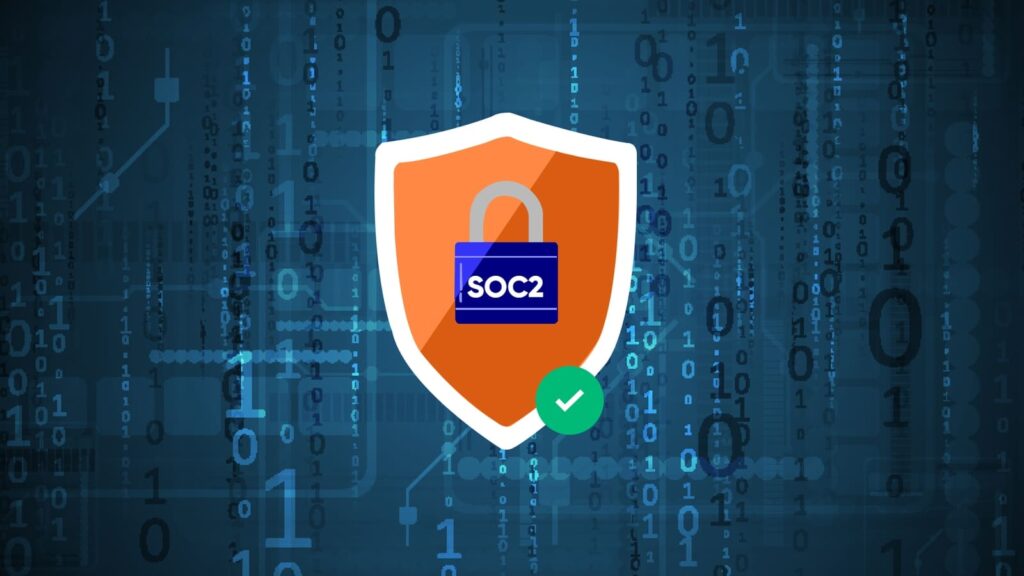
Expert Insights on Achieving SOC2 Compliance with Confidence
Simplifying SOC2 certification is a common goal for many businesses.
The Service Organization Control 2 (SOC2) report is a sought-after stamp of approval when it comes to data security. It shows your customers that you're serious about protecting their information.
But truth be told, as with most things, achieving SOC2 compliance can be a bit daunting if you don't deal with it regularly. There are several requirements to meet, and it's easy to get lost in the details.
That's why we're here to help!
We're answering your burning questions about SOC2 certification.
Best yet, we’ll show you how pentesting can make the whole process smoother and less stressful.
Q1: What exactly is SOC2 certification, and why is it important?
SOC2 certification is like a gold standard for data security. It shows that you have the right controls in place to protect your customers' information.
It's based on five key principles:
- Security – Your systems are protected against unauthorised access and other threats.
- Availability – Your systems are available to your customers when they need them.
- Processing Integrity – Your systems process data accurately and completely.
- Confidentiality – Confidential information is kept, well, confidential.
- Privacy – You're handling personal information responsibly.
Achieving SOC2 certification isn’t just a nice-to-have. Besides protecting your, your staff’s, and your clients’ data, it shows clients you are responsible.
If possible, clients can see that you are serious about cybersecurity and protecting them while they are in your care, they’ll be more inclined to take up your services.
Q2: How does penetration testing fit into the SOC2 certification process?
Penetration testing is a key part of meeting SOC2 certification requirements. It helps you find and fix vulnerabilities in your systems before hackers do.
Think of it as a fire drill for your cybersecurity system – it helps you prepare for the real thing.
By conducting regular pentests (about once a year), you can show the SOC2 auditors that you're proactively identifying and mitigating risks. This demonstrates your commitment to security and helps you meet the SOC2 criteria.
Q3: What kinds of weaknesses can a penetration test uncover?
- Security misconfigurations. These are errors in how your system is set up, and it could let attackers through.
- Software flaws. Attackers could exploit bugs in your software to take control of your systems or steal data.
- Weak passwords. This might sound redundant, but remember in 2018 when Kanye West accidentally exposed his phone password? It was 000000. Annual training helps remind staff of the importance of these nitty-gritty issues.
- Social engineering vulnerabilities. Despite their poor spelling, outrageous claims, or horrible links, not all phishing scams are as cut and dry as you’d think. Some are pretty clever — they can be camouflaged as customer emails and messages and almost perfect duplicates of legit services. It only takes one click for hackers to gain access.
Q4: What are the benefits of using penetration testing for SOC2 compliance?
- It helps you find hidden vulnerabilities. Sometimes, weaknesses in your systems are hard to spot. Pentesting can help you find the hidden weak links.
- It strengthens your security posture. Regularly testing your defences will show how your system holds up against new developments in the cybercrime space. You’ll also determine where your system should be updated to make and keep it more resilient.
- It helps you meet SOC2 requirements. Penetration testing is valuable in showing your commitment to cybersecurity and meeting SOC2 criteria.
- It saves you money in the long run. Finding and fixing vulnerabilities helps you avoid the much larger costs of a data breach. It also helps you identify where your resources are most needed.
Q5: What are some common mistakes to avoid when using penetration testing for SOC2 compliance?
Even with the best intentions and systems, organisations can fall into common traps when pursuing SOC2 certification requirements.
Here are a few to watch out for:
- Not testing frequently enough. Regular testing is essential to maintain a strong security posture.
- Not testing the right systems. Make sure your penetration tests cover all the systems that are in your SOC2 audit scope.
- Not fixing the vulnerabilities. Don't just identify the weaknesses – take action to remediate them!
- Not documenting your efforts. Keep detailed records of your pentesting activities and remediation efforts.
- Overlooking physical security. Don't forget about the physical security of your data centres and offices! SOC2 also considers physical safeguards.
- Poor vendor management. If you rely on third-party vendors, make sure they also meet SOC2 standards. Their security practices can impact your compliance!
Q6: How can 7ASecurity help me simplify SOC2 certification?
We're not just experts in penetration testing. We're also your partners in achieving SOC2 compliance.
Here's how we can help:
- Tailored penetration testing. We'll design our tests to specifically address the SOC2 Trust Services Criteria relevant to your business.
- Expert guidance and support. Our team advises and guides you on aligning your cybersecurity practices with SOC2 requirements.
- Comprehensive reporting. We'll provide detailed reports that clearly outline our findings and provide actionable recommendations for remediation.
- Ongoing support. We're here to support you throughout your SOC2 journey, even after your initial certification.
Want to learn more about how we can help you achieve SOC2 compliance?

